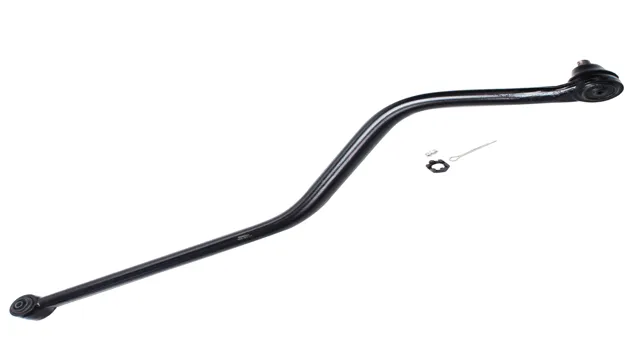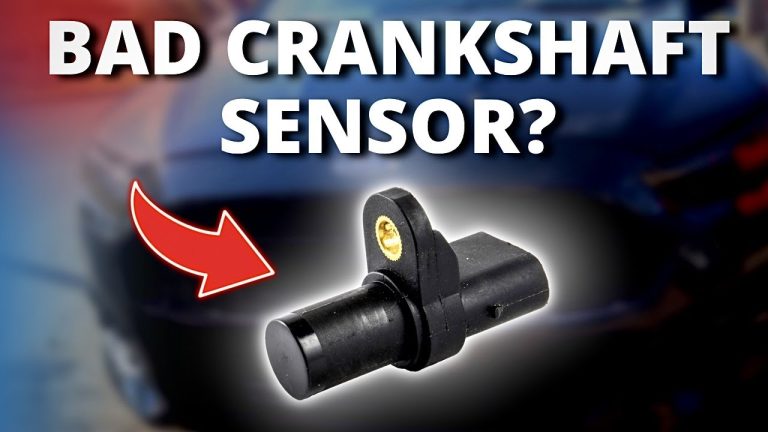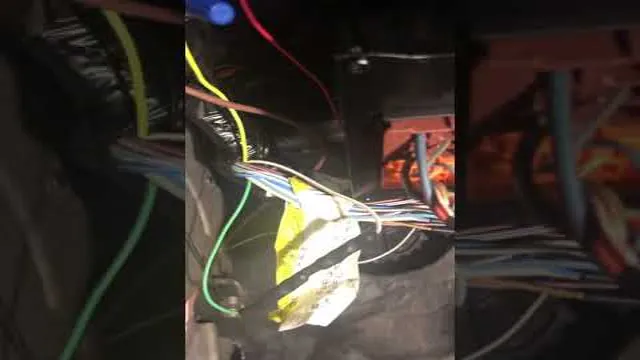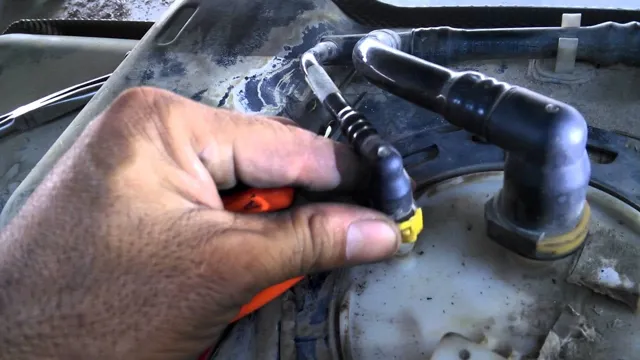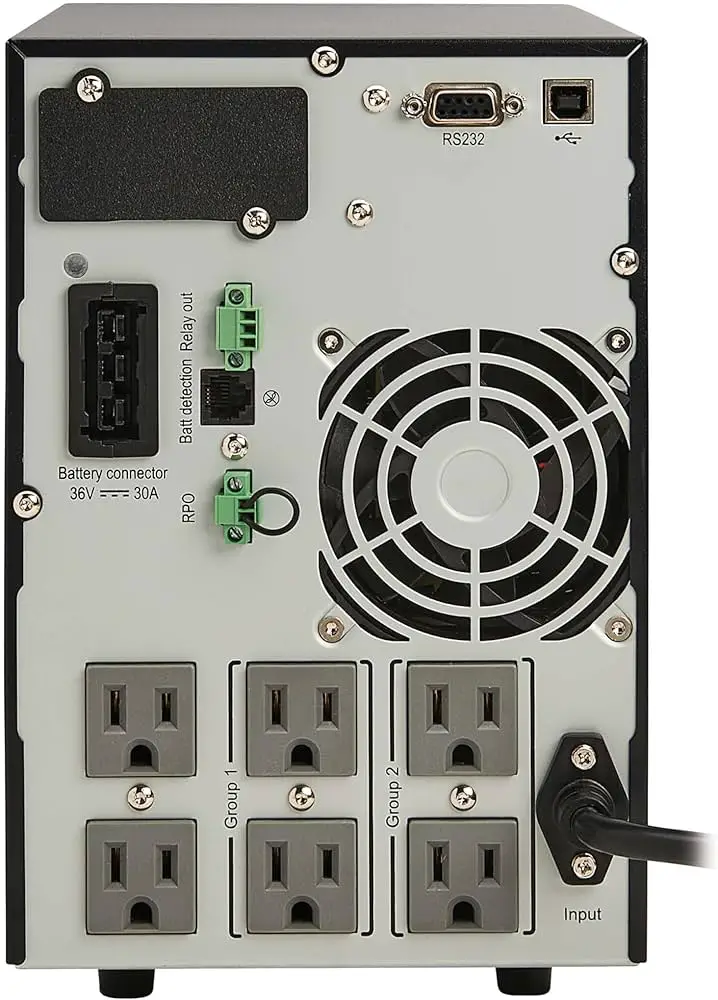Maximizing Stability: A Comprehensive Guide to Centering the Axle with an Adjustable Track Bar
Are you planning on upgrading your Jeep’s suspension system? One important step you’ll need to take is centering the axle. This is crucial to maintaining proper tire clearance and preventing excess wear and tear on your vehicle. Luckily, with an adjustable track bar, centering the axle is a relatively simple process that you can tackle yourself.
In this article, we’ll walk you through the steps of centering your Jeep’s axle using an adjustable track bar and provide some tips to ensure you do it correctly. So grab your tools and let’s get started!
What is an Adjustable Track Bar?
If you have lifted your Jeep or truck, you may notice a problem with the suspension system that centers your axle. The good news is that there’s a simple solution, and it involves adjusting your track bar. An adjustable track bar is a suspension component that replaces the factory bar, allowing for adjustments to be made to the length of the bar.
This adjustment means that the axle can be centered, even with an off-center lift kit. To center the axle using an adjustable track bar, you will need to install the new bar and make adjustments until the axle sits perfectly between the wheels. Once the axle is centered, you’ll find that your vehicle drives smoother and handles better on the road.
So if you’re struggling with a lifted vehicle that’s rocking your world, an adjustable track bar may be the answer you’re looking for.
Definition and Purpose
An adjustable track bar is a component of a vehicle’s suspension system that connects the axle to the frame. The purpose of the track bar is to maintain proper alignment of the vehicle’s front or rear axle. While fixed track bars are designed to fit a specific vehicle height and weight, adjustable track bars provide versatility to adjust the track bar length according to the driver’s preferences.
These adjustments are usually necessary when a vehicle has undergone a lift or leveling kit installation. The adjustable track bar allows for precise centering of the axle, minimizing issues related to tire wear and alignment. With an adjustable track bar, a driver can enjoy better handling and improved stability while on the road.
Overall, an adjustable track bar is a great investment for those who demand better performance from their vehicle’s suspension system.
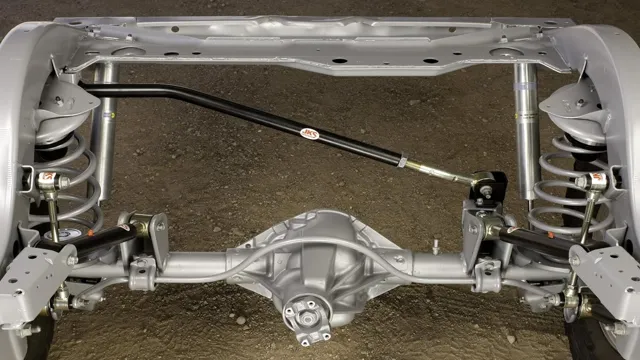
Why center the Axle?
If you’re trying to get your vehicle back to its original specifications or optimize performance, one important step to consider is centering the axle. This can be achieved using an adjustable track bar, a crucial tool that helps adjust the position of the axle. The purpose of centering the axle is to evenly distribute the weight of the vehicle, reducing the likelihood of uneven tire wear or damage to suspension components.
It can also help improve stability and handling while driving, especially in off-road or rugged terrain. So, if you’re experiencing any of these issues or simply want to optimize your vehicle’s performance, it’s worth taking the time to center your axle using an adjustable track bar.
Benefits and Risks of Off-Centered Axle
When it comes to the benefits and risks of off-centered axles on a vehicle, it’s always important to consider why centering the axle may be the better choice. While an off-centered axle can provide benefits such as improved stability and weight distribution, it also comes with risks such as increased wear and tear on the tires and suspension system. By centering the axle, the weight of the vehicle is more evenly distributed, which leads to better handling and a smoother ride.
It also helps to reduce the amount of stress on the suspension system and tires, which can ultimately extend their lifespan. It’s important to consider the specific needs of your vehicle and determine whether centering the axle or using an off-centered option is the best choice. Ultimately, the decision should be based on safety, performance, and longevity.
So, if you’re in doubt, it’s always best to consult with a professional to ensure that you make the right choice for your specific vehicle.
Symptoms of Off-Centered Axle
Off-centered axle If you’ve been driving your car for a while and notice that it’s not behaving the way it used to, it may be time to check your axle. An off-centered axle can cause several symptoms that can affect your car’s stability and safety. For example, you may experience noticeable vibrations in your steering wheel or your car may pull to one side when you’re driving straight.
Additionally, your tires may wear unevenly, reducing their lifespan and increasing your chances of a blowout. But why does this happen? Well, your car’s axle is responsible for keeping your wheels and tires in the correct position. When it’s not centered, it causes your tires to rotate unevenly, which then leads to the symptoms mentioned earlier.
The good news is that fixing an off-centered axle is usually a straightforward process that involves realigning your wheels and adjusting your suspension system. So, why center the axle? Well, for one, it helps to improve your car’s handling and stability, making your ride smoother and safer. Additionally, a centered axle helps to distribute the weight of your car more evenly, reducing wear and tear on your tires and other components, potentially saving you money in the long run.
Ultimately, centering your axle is one of the key ways to ensure your car’s longevity and safety.
How to Center the Axle with Adjustable Track Bar
If you’re experiencing handling issues with your vehicle, it’s possible that your axle has shifted out of its proper position. By using an adjustable track bar, it’s possible to bring the axle back to center. To get started, park your vehicle on level ground and measure the distance from the center of the wheel to the fender on each side.
Next, adjust the track bar by turning it in either direction until the measurements on both sides are equal. This centers the axle and should improve your vehicle’s handling. Keep in mind that if you have a lift kit installed, it may be necessary to also adjust other suspension components in order to fully center the axle.
With a little bit of patience and adjustment, you can bring your vehicle back to top performance.
Step-by-Step Guide to Adjusting the Track Bar
Adjustable Track Bar The adjustable track bar is an essential part of any vehicle’s suspension system, and it needs to be adjusted correctly to ensure the proper handling and safety of the vehicle. One major issue that can arise with an unadjusted track bar is an off-center axle. This can cause handling problems, uneven tire wear, and even a dangerous situation while driving.
So, here’s our step-by-step guide on how to adjust the track bar and center your axle. First, measure the distance between the center of the wheel and the frame on both sides of the vehicle. If the measurements are different, the axle is off-center.
Loosen the nuts on both ends of the track bar and adjust its length. Turn the adjustment collar clockwise to lengthen the bar and counterclockwise to shorten it. You can also use a wrench to adjust the bar.
Once the length is adjusted, tighten the nuts on both ends of the track bar. Now, it’s time to take measurements again. Double-check that the wheel’s center and the frame on both sides of the vehicle are equal.
If there’s still a difference, repeat the process until the measurements are equal. Pro tip: It’s essential to have the vehicle’s weight evenly distributed when adjusting the track bar. So, if you have any heavy aftermarket parts, make sure to add them to the vehicle before taking measurements and adjusting the track bar.
In conclusion, adjusting the adjustable track bar might seem like a daunting task, but it’s not that complicated. Follow these simple steps, and you will be able to center your axle and ensure safe and proper handling of your vehicle. Remember to double-check your measurements after adjustment and have even weight distribution for the most accurate results.
Tools and Equipment Needed
When it comes to centering the axle on your vehicle, one of the most effective methods is to use an adjustable track bar. This tool is essential for ensuring that the axle is properly aligned, and it can greatly improve the overall performance of your vehicle. To begin, you will need a few key pieces of equipment: an adjustable track bar, a wrench, a socket set, and a jack stand.
Once you have all of the necessary tools, you can begin the process of centering the axle. First, locate the adjustable track bar and loosen both ends of the bar using the wrench and socket set. Next, use the jack stand to support the vehicle and remove the old track bar.
Then, install the new adjustable track bar and adjust it until the axle is centered. Finally, tighten both ends of the adjustable track bar and test drive your vehicle to ensure that the axle is properly aligned. With the right tools and a bit of patience, centering the axle with an adjustable track bar can be a relatively simple process that can greatly improve the performance of your vehicle.
Precautions to Take Before Adjusting
When it comes to adjusting the track bar on your vehicle, it’s important to take a few precautions before jumping right in. Firstly, you should make sure that your car is parked on a level surface. Next, ensure that the tires are properly inflated and that there is no weight on the suspension.
This will help you to get a more accurate measurement and make adjusting the track bar easier. Once you’ve taken these precautions, you can begin centering the axle with your adjustable track bar. This process involves determining the center of your vehicle and then adjusting the track bar accordingly until the axle is centered.
By doing so, you’ll be able to improve the handling and alignment of your vehicle. Just make sure to take your time and follow the correct procedures to avoid any potential damage to your car.
When to Seek Professional Help
When it comes to centering your axle with an adjustable track bar, it’s important to know when it’s time to seek professional help. Adjusting your track bar can be a tricky task, and if done incorrectly, it can cause serious damage to your vehicle. While it’s possible to do it yourself with the right tools and knowledge, if you’re not confident in your abilities, it’s best to leave it to the professionals.
Additionally, if you’re experiencing any other issues with your suspension or steering, it’s important to have a mechanic take a look. These problems can be difficult to diagnose, and attempting to fix them on your own may not solve the underlying issue. So, if you’re unsure about how to properly center your axle or if you’re experiencing any other suspension or steering issues, don’t hesitate to seek help from a trusted mechanic who can get your vehicle running smoothly again.
Warning Signs of a Bigger Problem
Many people tend to ignore warning signs that something isn’t right, hoping things will get better on their own. However, if these signs persist, it might be time to seek professional help. Some warning signs of a bigger problem include difficulty sleeping or sleeping too much, sudden mood changes, prolonged feelings of sadness or anxiety, substance abuse, and changes in appetite.
These warning signs could indicate a range of issues, from depression to addiction, and should not be ignored. Seeking professional help can lead to an accurate diagnosis and the right treatment plan to address the underlying issue. Remember, it’s always better to seek help early rather than waiting until things escalate.
So take care of yourself and don’t be afraid to ask for help when you need it.
Finding a Trustworthy Mechanic Near You
When to Seek Professional Help As a car owner, it’s essential to understand when you should seek professional help from a trustworthy mechanic. Some car repairs like changing a flat tire or topping off fluids are easy for people to handle on their own. However, more complicated issues require the knowledge and expertise of a professional mechanic.
Suppose you hear strange noises coming from your car, feel vibrations or jerks while driving, or notice warning lights on your dashboard. In that case, it’s time to seek professional help. Ignoring these signs can lead to costly repairs or even an accident.
It’s crucial to find a reliable mechanic who can diagnose the problem accurately and fix it efficiently. Don’t wait for minor issues to turn into major problems before seeking help. Stay safe and give your car the proper care it needs by taking it to a qualified mechanic.
Conclusion
If you want to keep your vehicle driving straight and steady, just remember one key phrase: “Adjustable track bar, don’t go too far.” By carefully adjusting the length of your track bar with precision tools and a little bit of know-how, you can ensure that your axle is centered perfectly under your vehicle. It may take some time and effort, but the end result will be a smoother and safer driving experience.
So don’t let a misaligned axle throw you off course – take control with an adjustable track bar and get ready to roll with confidence!”
FAQs
What is an adjustable track bar?
An adjustable track bar is a suspension component in a vehicle that helps to center the axle and maintain proper alignment.
How does an adjustable track bar work?
An adjustable track bar works by allowing the user to adjust the length of the bar, which in turn moves the axle left or right. This helps to center the axle and maintain proper alignment.
How do I know if my axle is not centered?
You can tell if your axle is not centered by measuring the distance between the wheels on each side of the vehicle. If the distance is not the same, your axle may not be centered.
Can I adjust the track bar myself or do I need a professional?
Adjusting the track bar can be done yourself, but it is recommended to have a professional do it to ensure proper alignment and avoid any damage to the suspension system.

